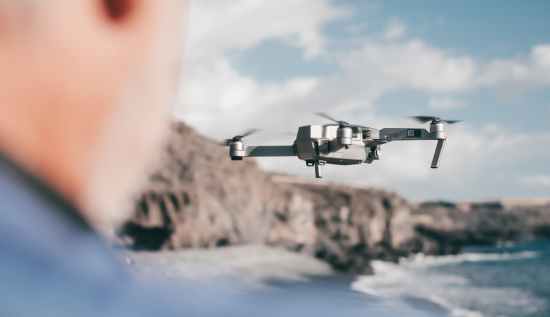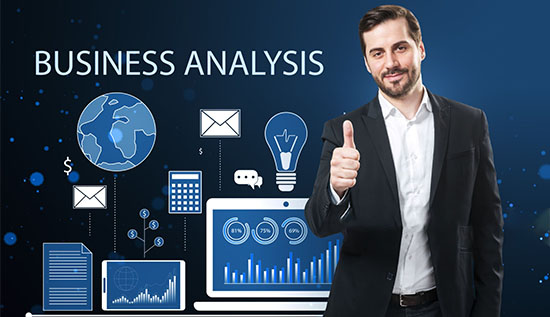Autonomous Drones | AI Drones & Self-Flying UAV Solutions

From delivery services to surveillance, self-flying drones powered by AI are reshaping logistics, farming, and modern aerial operations.
Drone technology has progressed from being toys for hobbyists to being sophisticated tools, that are revolutionizing industries over the course of the previous decade. Currently, autonomous drones which are also referred to as AI drones or self-flying drone are the next frontier in the realm of aerial innovation. The combination of artificial intelligence, computer vision, and modern sensors transforms these machines into intelligent systems that are capable of making decisions on their own and adapting to their surroundings in real time. Previously, these machines were merely gadgets that could be remotely piloted.
Autonomous flying is transforming the way in which humans interact with the sky in a variety of contexts, including the drone automation in agriculture and the use of unmanned aerial vehicles for logistics. The growth of autonomous UAVs, their core technology, and the rising roles that they play in commercial, industrial and humanitarian sectors are all topics that are discussed in this article.
What Are Autonomous Drones?
Unmanned aerial vehicle (UAVs) that are capable of operating without, direct human supervision are typically referred to as autonomous drones. By utilizing artificial intelligence, machine learning, and drone navigation technology, autonomous drones are able to independently interpret their surroundings and make decisions regarding flight. This is in contrast to traditional drones, which require the pilot to manually control the aircraft.
The onboard computing units of these drones are able to process massive volumes of data in real time. They are equipped with GPS, LiDAR, ultrasonic sensors, and other cutting-edge technologies. The objective of drone automation is to automate activities in such a way that they are continuous, safe, and efficient without requiring regular input from humans.
In the case of self-flying drone, for instance, they are able to follow pre-programmed flight courses, avoid obstacles, adjust to weather conditions and return to base safely all on their own. This is a significant step forward in the development of autonomous UAVs, which will enable businesses to carry out intricate airborne operations, with a reduced risk and expense.
The Evolution of Drone Automation
The incorporation of fundamental autopilot functions, including, as altitude hold and, GPS waypoint navigation, marked the beginning of the journey toward, drone automation. Deep learning algorithms, that are capable of pattern recognition, motion prediction and autonomous decision-making were included by engineers as machine learning and artificial intelligence continued to progress.
Modern AI drones, are already capable of recognizing items, detecting risks and even learning from their previous missions. Innovation is being driven by these capabilities across a variety of fields, including autonomous drones for delivery services to AI-powered drones for agriculture and self-flying drones for surveillance.
- Several significant advancements in drone navigation technology, have made it possible for drones to fly autonomously, including the following:
- Drones can "see" and understand their environment with the use of computer vision systems' capabilities.
- Drones can map unfamiliar environments, and track their own position with the use of a technology known, as simultaneous localization and mapping (SLAM).
- Computing at the edge enables drones to process data onboard, eliminating the need for them to rely only on cloud connectivity.
- Enable predictive decision-making, based on sensor inputs with the use of artificial intelligence flight control systems.
These technologies have, when combined, resulted in the creation of a new category of intelligent, self-sufficient, autonomous UAVs, that are revolutionizing aerial operations.
How Drone Navigation Technology Works
The advanced drone navigation technology, that is at the core of every self-flying drone is absolutely essential. For the purpose of ensuring precise placement, this system integrates information from global positioning systems (GPS), inertial measurement units (IMUs), cameras and, LiDAR sensors.
Visual odometry, for instance, is used by autonomous UAVs to detect their speed and orientation, and AI-driven path planning algorithms assist, in avoiding obstacles in surroundings that are constantly changing. AI drones, rely on visual simultaneous localization and mapping (SLAM) and machine learning models to maintain their spatial awareness in environments that do not support GPS, such as indoors, or under dense canopies.
Furthermore, drone automation incorporates real-time communication between drones and base stations or cloud servers. This allows for more efficient operations. Because of this, missions are coordinated, fleet management is managed and adaptive retasking is performed.
The use of unmanned aerial vehicles for logistics in logistics operations makes use of sophisticated navigation and route optimization algorithms, to deliver items in an efficient manner, hence minimizing the amount of human error and the expenses associated with transportation.
Autonomous Drones for Delivery Services
One of the most promising applications of autonomous drones for delivery services is in logistics and e-commerce. Companies such as Amazon, UPS, and DHL have been at the forefront of developing autonomous delivery drones that are capable of transferring products over short to medium distances while flying alone.
These delivery systems, are able to optimize routes, identify and avoid barriers and deliver products more quickly than ground vehicles because they make use of drones automation and autonomous UAVs. The benefits include a reduction in the amount of traffic congestion, a decrease in emissions and the ability to reach places that are either distant or affected by disasters.
It is possible for these artificial intelligence drones to independently authenticate recipients, identify landing zones and adjust to varying weather conditions. It is possible that in the not-too-distant future, unmanned aerial vehicle for logistics will become an essential component of last-mile delivery, particularly in rural areas, or urban areas that are especially congested.
Furthermore, rules are gradually being modified to allow for the operation of self-flying drone within common airspace which is opening the way for the widespread use of autonomous drone for delivery services.
AI-Powered Drones for Agriculture
Another area that is being changed by drones driven by AI-powered drones for agriculture. These autonomous unmanned aerial vehicles give farmers the ability to monitor crops, evaluate soil conditions, and optimize irrigation systems with an accuracy that has never been seen before.
The use of artificial intelligence drones that are fitted with multispectral cameras and AI analytics, allows for the early detection of agricultural stress, pest infestations and nutritional deficits. This gives farmers the ability to make decisions based on data, which can boost productivity while also reducing costs.
Additionally, processes such as planting, spraying, and precision mapping, can be supported by drones automation in the agricultural sector. A single self-flying drone can cover hundreds of acres in a single flight, automatically altering its path to concentrate, on places where there are issues.
Even while operating in difficult conditions, these drones, are able to function effectively and safely thanks to the incorporation of drone navigation technology. Artificial intelligence -powered drones for agriculture will play a significant part in ensuring sustainable farming methods as, the need for food reaches new heights around the world.
Self-Flying Drones for Surveillance and Security
The way in which governments, businesses and security companies monitor huge areas, is being revolutionized by the adoption of Self-flying drones for surveillance purposes. These unmanned aerial vehicles, are able to patrol perimeters on their own, identify areas that have been breached and react to security problems in real time.
Autonomous unmanned aerial vehicles may fly around the clock with minimal supervision, in contrast to drones that, are operated manually. Live video feeds can be transmitted to security forces, and they can be configured to follow specified patrol routes, respond to warnings and follow specific guidelines.
Artificial intelligence drones improve situational awareness by utilizing computer vision and machine learning to recognize cars, faces or motions, that may be suspicious. Because of this, self-flying drone for surveillance are extremely useful with regard to the management of borders, the protection of important infrastructure and the monitoring of crowds.
These drones are able to navigate challenging situations, such as, dense forests, or urban areas, because to advancements in drones navigation technology. Additionally, they are able to maintain stable communication with command centers. As a consequence of this, the drones automation is promptly becoming an essential component of contemporary security techniques.
Unmanned Aerial Vehicles for Logistics and Infrastructure
The unmanned aerial vehicle for logistics in the logistics industry are not restricted to the delivery of tiny packages; rather, they are also being used for applications in the industrial and infrastructural sectors. The transportation of tools, equipment and spare parts across building sites, offshore platforms, and mining operations is increasingly being accomplished by autonomous drone.
Through the utilization of drones automation and artificial intelligence-driven, route optimization, businesses, are able to optimize their internal logistics and reduce downtime. These autonomous unmanned aerial vehicles, are capable of transporting payloads over hazardous or inaccessible terrain, hence reducing the risk to human workers.
A further application for artificial intelligence drones is the inspection of electrical lines, pipelines, and bridges. The necessity for expensive manual inspections, is reduced as a result of their capability to independently scan and analyze infrastructure, through the use of heat mapping and visual imaging.
The drones navigation technology is likely to continue to advance, which will allow unmanned aerial vehicle for logistics to integrate seamlessly into supply chains. These vehicles, will be able to support a wide range of logistics tasks, including factory-to-factory deliveries, and inter-warehouse transfers.
Challenges and Limitations
Although they hold a great deal of promise, autonomous drone, must first overcome a number of obstacles before they can be widely adopted.
- The aviation authorities are still in the process of building frameworks for autonomous flight in shared airspace which presents a regulatory barrier.
- Flight periods for artificial intelligence drones and self-flying drone, are limited by the energy density constraints that are now in place.
- Concerns about data privacy and cybersecurity, are growing in tandem with the rise in the use of drones automation data collection.
- Harsh weather conditions and the loss of GPS signal, can have an effect on the performance of autonomous unmanned aerial vehicles (UAVs).
These difficulties are being addressed by developers through the use of improvements in battery technology, edge artificial intelligence computing and fail-safe navigation systems. Regulatory harmonization, on the other hand, continues to be an essential step toward the widespread deployment of autonomous drone for delivery services, artificial intelligence -powered drones for agriculture, and other commercial applications.
The Future of AI Drones and Autonomous UAVs
The development of artificial intelligence, connectivity and automation, are all intertwined with the future of artificial intelligence drones. Autonomous drone, will be able to take use of quicker data transmission thanks to the proliferation of 5G networks which will make it possible for self-flying drone to engage in coordinated swarm operations and real-time analytics.
Enhanced autonomy through reinforcement learning is projected to be a feature of future autonomous unmanned aerial vehicles, which will enable these vehicles to adapt and improve over time. Consequently, this paves the way for completely autonomous drone fleets to simultaneously manage surveillance, delivery and inspection missions.
The development of hybrid drone systems, that are able to do vertical takeoff and landing (VTOL) as well as long-range flying is another trend that will emerge. These concepts, when combined with advancements in drones navigation technology will make drones automation more robust and reliable than it has ever been before.
As businesses begin to use unmanned aerial vehicle for logistics and autonomous drone for delivery services, drones will transition from being specialized tools to being vital components of the infrastructure of the entire world.
Ethical and Environmental Considerations
Ethical and environmental concerns, are also brought up by the increased use of autonomous drone notwithstanding their broad deployment. Although artificial intelligence drones improve productivity, they must operate under established restrictions for privacy and safety. For example, surveillance programs, need to strike a compromise between protecting the public and protecting civil liberties.
The drones automation offers significant advantages from an environmental point of view, including a reduction in pollutants, traffic congestion, and fuel usage and consumption. Nonetheless, recycling batteries and producing products in a sustainable manner continue to be significant issues.
It will be necessary to have international standards, transparent artificial intelligence models, and environmentally friendly designs in order to guarantee, that self-flying drones and autonomous unmanned aerial vehicles operate in a responsible manner.
Conclusion
There has been a significant turning point in the development of technology with the advent of autonomous drones. These systems are transforming industries with speed, efficiency, and, intelligence. Examples of these systems, include drones driven by artificial intelligence -powered drones for agriculture to autonomous drone for delivery services, and self-flying drone for surveillance.
The boundaries of what is feasible in the air will be significantly expanded as the technology behind drones navigation technology and drones automation, continues to progress. Unmanned aerial vehicle for logistics and autonomous unmanned aerial vehicles are ushering in a new era of aerial innovation. These vehicles are being used for a variety of purposes, including the transportation of products, the protection of communities, and the optimization of farmlands.
In the years to come, artificial intelligence drones will not merely provide assistance to humans; rather, they will work in tandem with them, developing into the foundation of intelligent, interconnected ecosystems that will reimagine transportation, communication and sustainability.
Read More: Onboarding Automation: Benefits, Tools, and Best Practices
More Articles
 06 Dec 2025
06 Dec 2025
AI Chatbots for Customer Support & Virtual Assistants
Boost customer satisfaction with intelligent AI chatbots for customer support. Deliver instant responses, automate service tasks, and scale your support team 24/7 with smart virtual assistants.
 06 Dec 2025
06 Dec 2025
Custom Apps vs Ready-Made Software: Key Benefits
See how custom apps vs ready-made software impact productivity, integration and flexibility for businesses of all sizes.
 05 Dec 2025
05 Dec 2025
eWallet and Online Transaction Security in Cambodia
Stay protected with essential insights on eWallet and online transaction security in Cambodia, covering key risks, safety practices, and fraud prevention tips.
 04 Dec 2025
04 Dec 2025
Apply for Senior Business Analyst – Loma Technology
Detailed resource explaining the Senior Business Analyst Loma Technology role, ideal for candidates seeking clarity on expectations and recruitment stages.